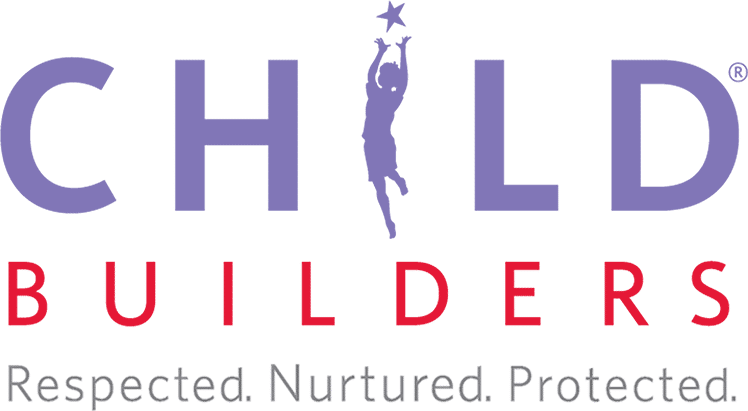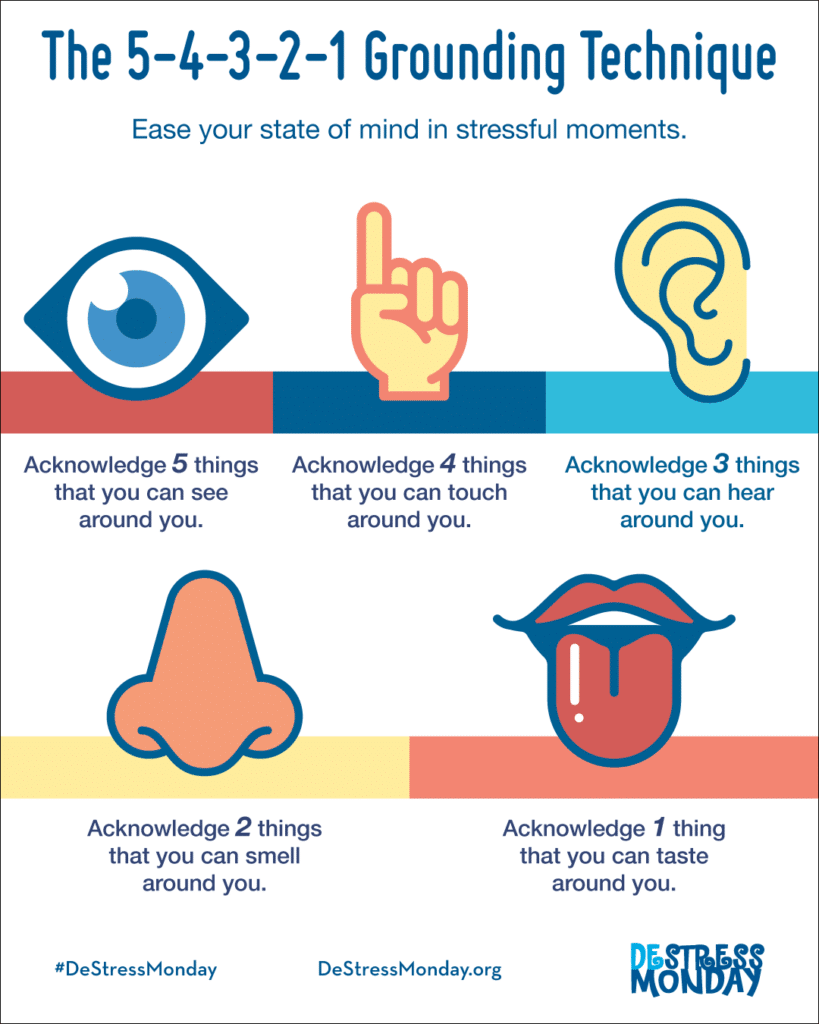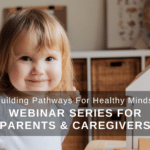Prepared by Ann Friedman, PhD, and Mindful Being Houston; Copyright 2022 Mindful Being P.C.
This work is a companion resource to ChildBuilders’ webinar on Mindful Parenting. You can view prerecorded sessions here.
What is mindfulness? Mindfulness is paying attention to the present moment with no
judgment.
It’s an awareness of your experience in the now with curiosity, openness, and a
willingness to be with what is that you cannot change. When you are not present, you
run on autopilot—like a robot going through motions.
When you greet the present moment with openness, you have freedom. You can be
with things that are challenging with a quality of attention that can be present no matter
what is happening. And, the side effect of being present is stress reduction.
Health Benefits to Mindfulness Practice
About 6,500 studies on mindfulness suggest that mindfulness can reduce stress and
burnout, improve attention and memory, reduce anxiety and depression, improve
immune system functioning, increase gray matter in your brain, and create a sense of
well-being.
Activating Your System of Rest and Digest to Calm Your Mind and Body
Your parasympathetic nervous system is your system of “rest and digest.” When it
activates, you feel more relaxed, your digestion flows better, and you have alpha waves
of calm in your brain. You can activate this system in at least two ways:
Take 3-6 long, slow deep breaths. The key is your exhale; it should be about
twice as long as your inhale. A good count is to inhale for 3 through your nose,
hold for 2, exhale for 6 through your mouth or nose, which ever you prefer. Do
this whenever you are stressed and notice how you feel. Are you calmer?
Remember a nurturing moment with a person, pet or place when you felt safe,
calm, and content. It doesn’t have to be a big moment. It could be a time when
you were petting your dog, walking in nature, hanging out with a friend, or
spending time with family or a friend. Bring the memory fully to mind noticing
smells, colors, shapes, faces, textures, tastes—whatever you remember. Notice
how you feel in your body and mind. It can make you peaceful and relaxed.
Training Focus and Attention.
Your body is always in present moment so we can use it as an “anchor” to the present.
Sit upright, but relaxed, hands in lap, feet on floor, and eyes closed or gazing downward.
Begin by feeling the places of contact with your chair or the floor. Try one of these:
Breathing Meditation.
Feel your breath in your nose, chest and belly. Choose
one of those places to focus where your breath feels easy to follow. Begin to
count your breaths– inhale, exhale, 1; inhale, exhale 2–counting 1-10 and when
you get to 10, go back to 1. When your mind wanders, notice and label it thinking
and return to counting your breaths.
Mindful Hand Breathing
Link to a resource about this.
- Put up your non-dominant hand. Use the pointer of your dominant hand to trace your fingers.
- As you breathe in, trace up the finger, as you exhale, trace down.
- Notice the sensations of touch in addition to your breath.
- When you reach the end, reverse and go in the other direction.
Hearing Meditation.
Listen to sounds. You might hear noises outside (like cars,
birds), sounds inside (like air conditioning, talking) or sounds from within your
body (like gurgling, swallowing). Don’t search for the sounds. Just listen to
sounds as they come and go. When your mind drifts, notice thinking and come
back to listening. Try to hear sounds as if you have never heard them before.
You might notice that each car sound is different, so are all the other sounds!
“Seeing” Meditation.
Look out the window for 3 minutes and see what you see
that is new today. What do you notice about the sky, birds, clouds, trees, cars,
and other objects? When your mind wanders, notice thinking and return it to
seeing. Discuss what you noticed about the view and your mind.
Once, 4th grade kids noticed 40 things in their school gym that they had never
noticed. You can also have kids look around the room and spot new things.
Mindful Awareness Practices for Focus and Attention: USE YOUR
SENSES!
Focus on your daily activities. You can do anything mindfully by doing it curiosity.
- Mindful handwashing, bathing, showering. As you bathe or shower or wash
your hands, you might notice that the water is warm, the soap feels silky, the
smell is minty, and the bubbles vary in size and color. You might become aware
of how lucky you are to have warm, clean water. Your body will relax, as you are
giving your mind a break from stressful thinking. When you start thinking about
school or other things that stress you, notice thinking, and return to exploring your
experience in the tub or shower. - Mindful Eating. As you eat, pay attention to how your food looks—the colors,
shapes, sizes. Is it shiny or dull? Then notice the smells… are they spicy, sweet,
fruity, stinky, or something else? Feel yourself picking up your fork or spoon.
How does it feel in your hand? As you put the utensil in the food, is the food firm
or soft? When you put the food in your mouth, is it warm, hot, cold, cool, hard,
mushy, bumpy, smooth, or another sensation? Notice taste: is it sweet, spicy,
tangy, pungent, tart or something else? As you chew, what do you notice about
the taste and texture? Do they change? What does swallowing this bite feel like?
Is there an after-taste in your mouth? How would you describe it? You can learn
to savor your food! - Mindful Toothbrushing. As you hold your toothbrush, notice how it feels in your
hand. Put the toothpaste on it. Notice the color. Is it shiny or dull? Is there one
color or several? Smell the toothpaste… how would you describe it? Now put
your hand to your mouth and begin to brush your teeth. Notice how the bristles
feel on your gums and teeth. Is the toothpaste smooth or gritty? How does it
taste? When you rinse your toothbrush and put it back in your mouth, how does
the experience change? What do you notice? As you brush, if you start thinking
about other things, return your mind to the experience of brushing.
Grounding with Extreme Anxiety or Panic
Extreme anxiety can be quite unpleasant. Many people even have panic attacks. If
you do, you might notice that your heart is pounding, your breath gets shallow, and
your head is spinning. Sometimes people have chest pain. Your mouth might get
dry and your throat and shoulders tense. You can sometimes use long, slow,
deep breaths.
However, sometimes it is hard to slow and deepen your breath. In that case, you
want to use 5-4-3-2-1 to ground in present moment.
5-4-3-2-1
Link to a resource about this.
- Describe 5 things you can see in as much detail as possible out loud.
- Describe 4 things you can hear in detail out loud.
- Describe 3 things you can touch in detail out loud.
- Describe 2 things you can smell in detail out loud.
- Describe the taste in your mouth.
Speak to Yourself as You Would a Good Friend
- What you are dealing with is hard. It would be hard for anyone.
- I care about you. I love you and will not leave you.
- You are the perfect you. You could not be any different. And, you are imperfect like everyone else.
- You are doing the best you can and that is all you can do.
- You will make mistakes. Everyone does. Mistakes are opportunities to learn and grow.
- Things are as they are. May you accept them as they are, remembering they will change.
- Millions of kids around the world are feeling the same thing for the same reason. Your story is universal. You are not alone or weird.
- May you be safe. May you be strong and healthy in body and mind.
- May you find ease in your day and find happiness.
- May you feel peace and peace of mind.
- May your struggles end.








